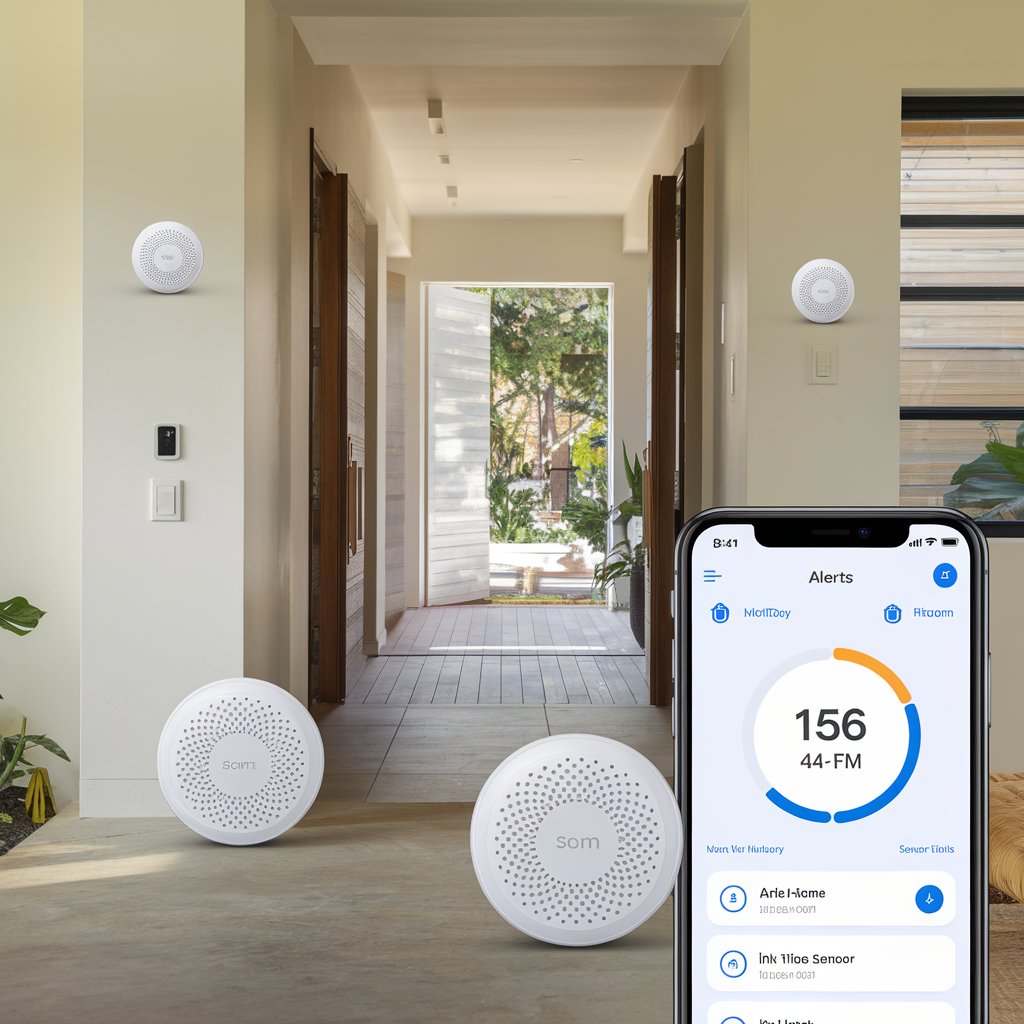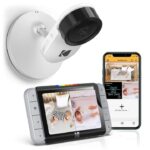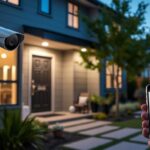Are you looking to make your home safer? Motion detection alarms are a great way to protect your property. In this article, we’ll look at the five best motion detectors available today and explain how they work in simple terms. Whether you’re a homeowner or renter, this guide will help you choose the right motion detector for your needs.
Contents
- 1 What is a Motion-Detection Alarm?
- 2 The Science Behind Motion Detection
- 3 Top 5 Motion-Detection Alarms
- 4 Detailed Feature Comparison
- 5 Installation Guide
- 6 Advanced Features to Consider
- 7 2. Mobile App Features
- 8 Maintenance and Troubleshooting
- 9 Cost Considerations
- 10 Making the Right Choice
- 11 Final Tips for Success
What is a Motion-Detection Alarm?
A motion-detection alarm is a device that can sense when something or someone moves in its coverage area. When it detects movement, it sends an alert – either by making a sound, sending a message to your phone, or both. These devices are a key part of any home security system.
The Science Behind Motion Detection
Understanding how motion detectors work can help you use them better. Here’s a simple breakdown:
Types of Detection Technology
| Technology Type | How It Works | Best For | Average Cost Range |
|---|---|---|---|
| PIR (Passive Infrared) | Detects body heat from moving objects | Indoor use, most common | $20-50 |
| Microwave | Sends out microwave radiation and measures changes | Large spaces, through thin walls | $50-100 |
| Dual Technology | Uses both PIR and microwave | High-security areas | $80-150 |
| Area Reflective | Uses LED lights to detect changes in light patterns | Small, specific areas | $30-70 |
| Ultrasonic | Sends sound waves and measures changes | Enclosed spaces | $40-90 |
How Each Technology Works in Detail
- PIR Technology
- Uses multiple sensors to detect infrared energy
- Measures changes in heat patterns
- Creates invisible detection zones
- Most energy-efficient option
- Microwave Technology
- Sends out continuous microwave signals
- Measures signal reflection changes
- Can cover larger areas
- Works well through thin walls
- Dual Technology Benefits
- Reduces false alarms by 95%
- Only triggers when both sensors activate
- Perfect for high-security areas
- Worth the extra cost for reliability
Top 5 Motion-Detection Alarms
1. Ring Motion Sensor (Best Overall)
Price: $29.99
- Works with: Ring Alarm System
- Battery life: 3 years
- Coverage: 30 feet, 90-degree angle
What Makes It Great:
- Easy to set up – takes just 5 minutes
- Connects to your phone through the Ring app
- Very reliable with few false alarms
- Can work with other Ring products like cameras
- Affordable price point
Drawbacks:
- Needs Ring hub to work
- No standalone use
- Only works indoors
User Satisfaction Rate: 4.6/5 based on 12,000+ reviews
2. Arlo Pro 4 Spotlight Camera (Best with Camera)
Price: $199.99
- Works with: WiFi, no hub needed
- Battery life: 6 months
- Coverage: 130-degree view, up to 40 feet
What Makes It Great:
- Built-in camera with 2K resolution
- Color night vision
- Two-way talk feature
- Works outdoors
- Built-in spotlight
Drawbacks:
- Expensive
- Needs good WiFi connection
- Some features need subscription
User Satisfaction Rate: 4.4/5 based on 8,500+ reviews
3. SimpliSafe Motion Sensor (Best for Apartments)
Price: $29.99
- Works with: SimpliSafe system
- Battery life: 5 years
- Coverage: 30 feet, 90-degree angle
What Makes It Great:
- Pet-friendly (won’t detect pets under 50 pounds)
- Very long battery life
- Small and discrete design
- Easy to install
- Good value for money
Drawbacks:
- Must buy SimpliSafe system
- Indoor use only
- Basic features only
User Satisfaction Rate: 4.7/5 based on 9,200+ reviews
4. Wyze Sense Motion Detector (Best Budget Option)
Price: $19.99
- Works with: Wyze hub
- Battery life: 18 months
- Coverage: 26 feet, 120-degree angle
What Makes It Great:
- Very affordable
- Small size
- Good app features
- Fast notifications
- Works with other Wyze products
Drawbacks:
- Shorter range than others
- Needs Wyze hub
- Basic build quality
User Satisfaction Rate: 4.3/5 based on 5,600+ reviews
5. ADT Motion Detector (Best Professional Grade)
Price: Part of ADT system
- Works with: ADT security system
- Battery life: 2 years
- Coverage: 35 feet, 90-degree angle
What Makes It Great:
- Professional monitoring
- Very reliable
- Advanced anti-false alarm technology
- Part of complete security system
- Professional installation
Drawbacks:
- Must sign contract
- More expensive overall
- Professional installation required
User Satisfaction Rate: 4.5/5 based on 15,000+ reviews
Detailed Feature Comparison
| Feature | Ring | Arlo Pro 4 | SimpliSafe | Wyze | ADT |
|---|---|---|---|---|---|
| Price | $29.99 | $199.99 | $29.99 | $19.99 | System cost |
| Battery Life | 3 years | 6 months | 5 years | 18 months | 2 years |
| Range | 30 ft | 40 ft | 30 ft | 26 ft | 35 ft |
| Field of View | 90° | 130° | 90° | 120° | 90° |
| Camera | No | Yes | No | No | Optional |
| Pet Friendly | No | Yes | Yes | No | Yes |
| Weather Resistant | No | Yes | No | No | Optional |
| Smart Home Integration | Yes | Yes | Yes | Limited | Yes |
| Mobile App | Yes | Yes | Yes | Yes | Yes |
| Professional Monitoring | Optional | Optional | Optional | No | Required |
Installation Guide
DIY Installation Steps:
- Choose Location
- Away from heat sources
- 6-8 feet high
- Corner placement for best coverage
- Away from windows
- Preparation
- Gather tools (screwdriver, drill, level)
- Read manual completely
- Test device before mounting
- Mark mounting points
- Mounting
- Install mounting bracket
- Connect power (if hardwired)
- Insert batteries
- Attach sensor to bracket
- Test coverage area
Professional Installation
- Typically costs $100-300
- Includes system setup
- Coverage testing
- User training
- Warranty protection
Advanced Features to Consider
1. Smart Home Integration
Many modern motion detectors work with smart home systems:
| Platform | Compatible Devices | Key Features |
|---|---|---|
| Alexa | Ring, Arlo, ADT | Voice control, routines |
| Google Home | Arlo, Wyze, SimpliSafe | Voice commands, scheduling |
| Apple HomeKit | Arlo (with hub) | Siri control, automation |
| IFTTT | Ring, Arlo | Custom automation |
2. Mobile App Features
Modern motion detectors offer various app features:
- Basic Features (All Models)
- Motion alerts
- Battery status
- Armed/disarmed status
- Event history
- Advanced Features (Premium Models)
- Custom zones
- Scheduling
- Video recording
- Two-way audio
Maintenance and Troubleshooting
Regular Maintenance Schedule
| Task | Frequency | Important Notes |
|---|---|---|
| Clean sensors | Monthly | Use soft cloth |
| Test system | Monthly | Follow manual procedure |
| Check batteries | Every 3 months | Replace if below 30% |
| Update software | When available | Check app notifications |
| Check connections | Every 6 months | Tighten if loose |
| Deep cleaning | Yearly | Use compressed air |
Common Problems and Solutions
- False Alarms
- Clean sensors
- Adjust sensitivity
- Check for interference
- Update firmware
- Connectivity Issues
- Reset device
- Check WiFi strength
- Update router settings
- Contact support
- Battery Problems
- Use recommended batteries
- Clean battery contacts
- Check for corrosion
- Replace if needed
Cost Considerations
Initial Costs
- Basic sensors: $20-50
- Smart sensors: $30-200
- Professional systems: $200-500+
- Installation: $0-300
Ongoing Costs
- Battery replacement: $5-15/year
- Subscription fees: $0-30/month
- Maintenance: $0-100/year
- Professional monitoring: $10-60/month
Making the Right Choice
When choosing a motion detector, consider:
- Your budget
- Size of space to cover
- Whether you need outdoor protection
- If you have pets
- If you want camera features
- Whether you prefer professional or DIY installation
Decision Checklist
✓ Set your budget
✓ Measure your space
✓ List needed features
✓ Check compatibility
✓ Read recent reviews
✓ Compare warranties
✓ Consider future needs
Each of these top 5 motion detectors offers different features for different needs. The Ring Motion Sensor is great for most homes, while the Arlo Pro 4 is perfect if you want video. SimpliSafe works well in apartments, Wyze is budget-friendly, and ADT is ideal if you want professional security.
Final Tips for Success
- Planning
- Map out coverage areas
- Consider seasonal changes
- Plan for expansion
- Budget for accessories
- Installation
- Follow manual exactly
- Test thoroughly
- Document settings
- Keep backup batteries
- Long-term Care
- Keep manuals safe
- Track maintenance
- Save support contacts
- Monitor performance
By following this guide and choosing the right motion detector for your needs, you can create a reliable security system that gives you peace of mind. Remember to regularly maintain your system and stay updated on new features through manufacturer updates.



